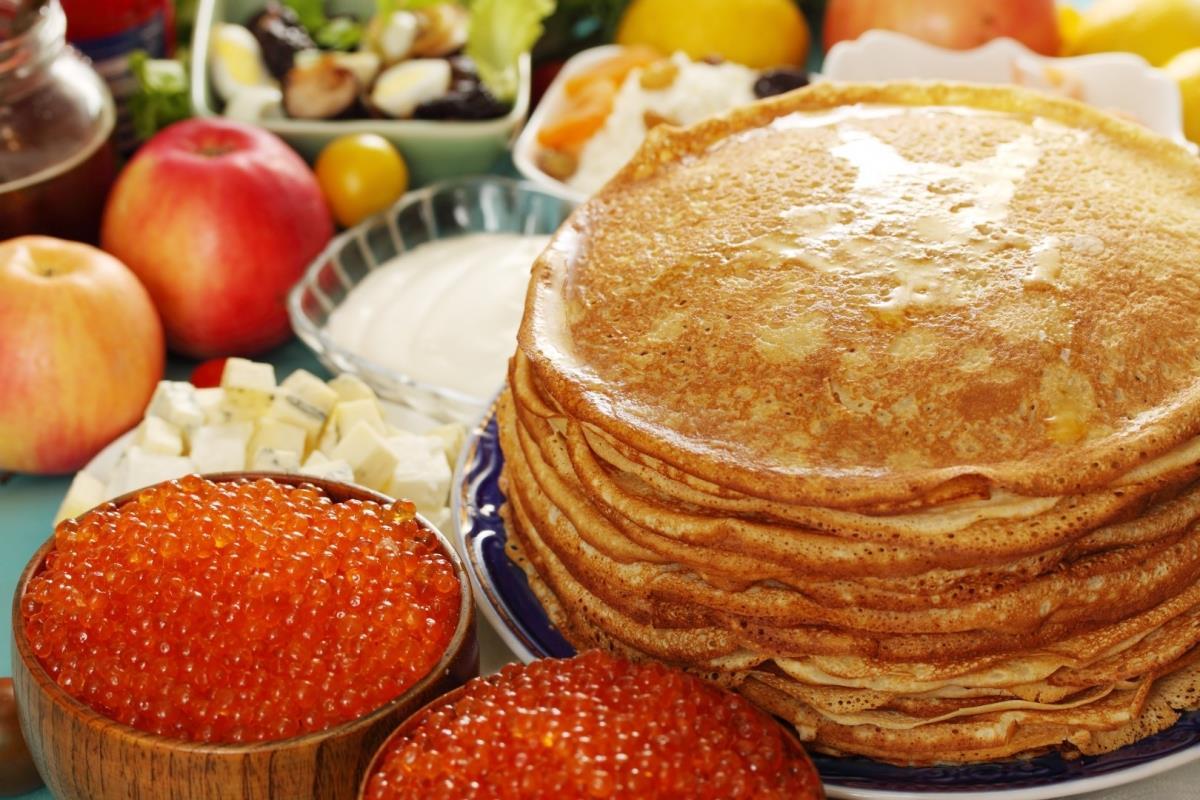- Minsk
Vereshchaka
Aromatic vereshchaka, roasted juicy meat, home-cooked sausages, golden draniki, cabbage, buckwheat and pumpkin pancakes, lazanka with different layers, trickled pastries, pickles, soups with white mushrooms and herbal and berry liqueurs… the Belarusian cuisine has a lot of dishes that can pleasantly surprise even gourmets.
Here you can find the recipes which will help you cook a dinner in Belarusian style and feel the taste of Belarus’ national cuisine. Cooks from Minsk restaurants share original recipes and their own cooking secrets.
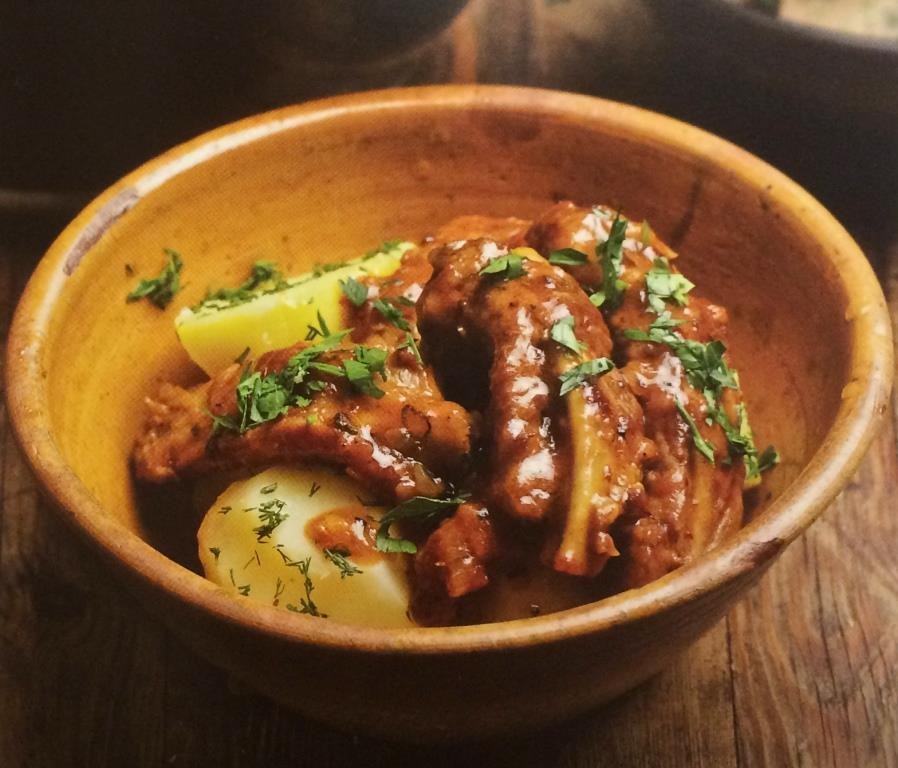
Potato pyzy
This are made from raw potato, bound with cooked potato. They take slightly longer to cook than other dumplings, but have a different flavor and texture that warrants the method. This recipe uses a cooked ground meat filling - a raw meat filling may be used, but the dumplings would take even longer to cook, and there is a danger of the potato mixture disintegrating. You may use other fillings equally successfully.
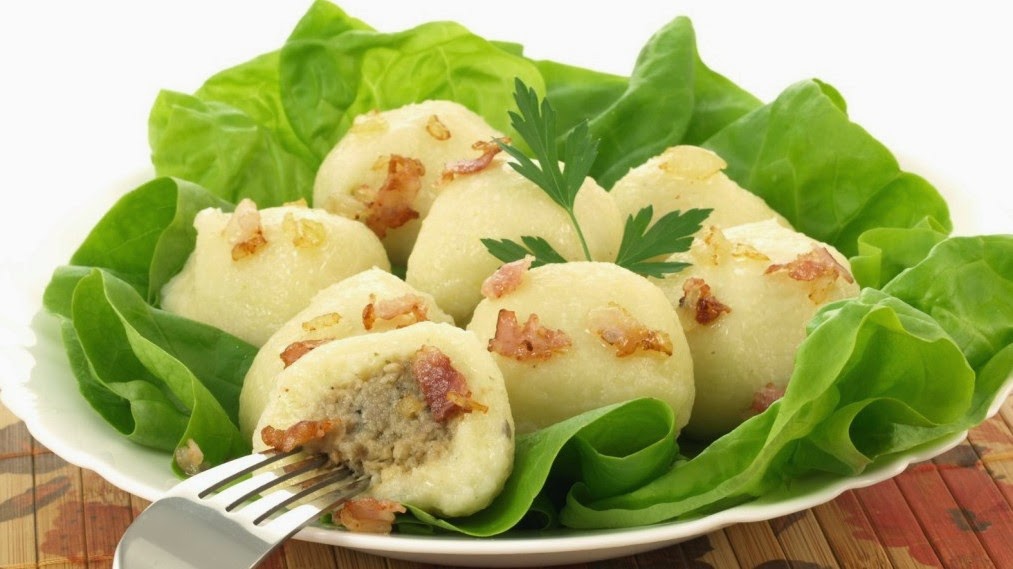
Potato sausage
Potato kishka appeared in the national cuisine in the 19th with the spread of potato (bulba), which is called "the second bread" in Belarus. The prototype of the potato kishka was even more ancient dish – sausage made from blood and buckwheat stuffed into pork intestine (kryvyanaya kishka). By the way, according to a legend, the influential noble family Kiszka got their name because the founder of the dynasty was very fond of the sausage. There are also recipes of kishka without blood, with cooked pork.
The sausage made from grated potatoes and pork (bacon and/or meat) became very popular among Belarusians as a delicious, affordable and nourishing dish.mixture disintegrating. You may use other fillings equally successfully.
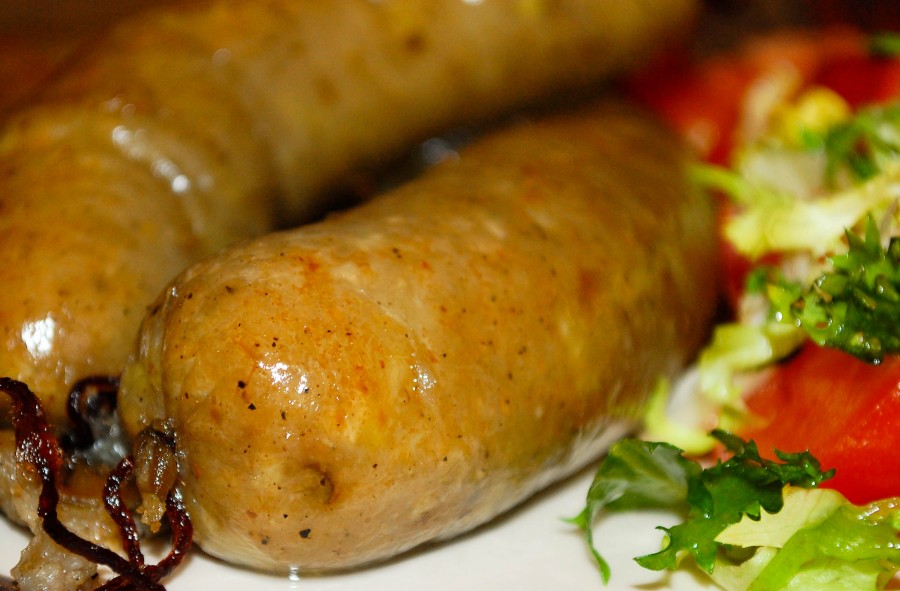
Belarusian salad
This dish was introduced in the diet of Belarusians not so long ago, but it perfectly fits the traditions of the Belarusian cuisine. Salads are based on products, which have long been used in many Belarusian recipes: liver, onion, mushrooms, pickled cucumbers.
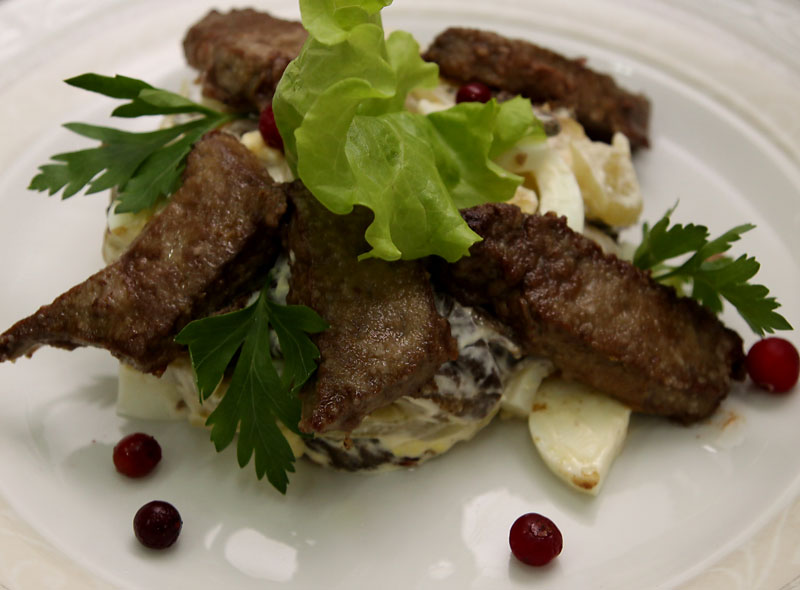
Lazanki
Lazanki was introduced into the Belarusian cuisine in the 16th century. The dish consists of pieces of dough made from wheat, buckwheat, or rye flour. Basically speaking, Belarusian lazanki and Italian lasagna come from one family. Belarusian cooks formed squares (triangles) from flattened tough dough, boiled them and pour fried lard with onions on top. During the lent, they put ground poppy seeds or mashed berries into the dough. Lazanki was also baked in pots together with meat or cabbage and stewed with sour cream.
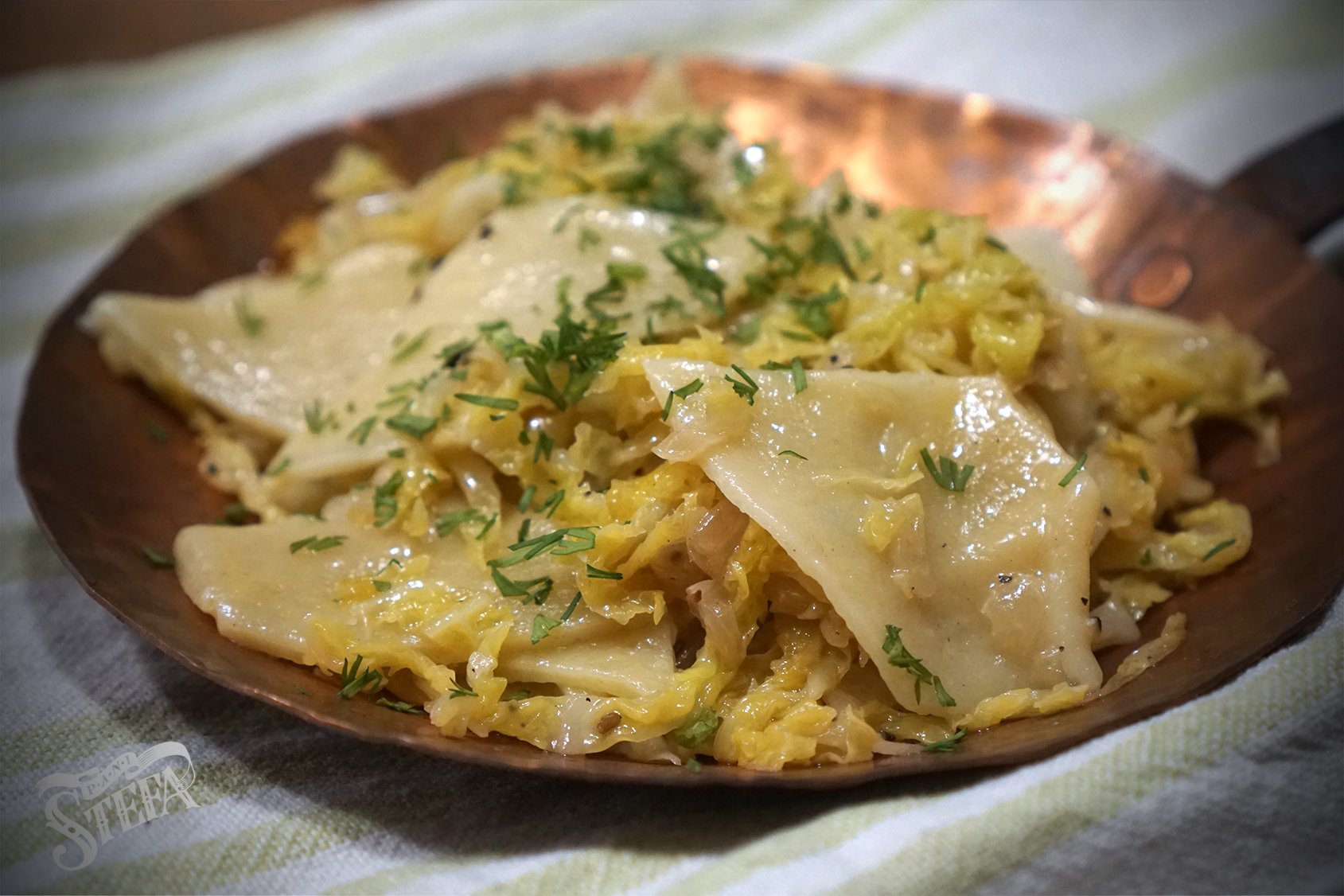
Draniki
Draniki is one of the most popular and famous dishes of the Belarusian cuisine.
Although there are many similar recipes for potato pancakes in various countries, Belarusian draniki is famous for its rich taste, national culinary secrets and the floury Belarusian potatoes – bulba – with their fluffy, dry texture that is perfect for making potato pancakes.
Floury Belarusian potatoes have great cooking qualities, which makes potato dishes particularly tasty.
Today Belarus is a not a world leader in potato growing, but the country is a leader in per capita production and consumption of potatoes. According to statistics, a Belarusian consumes over 180kg of potatoes per year.
Potatoes are the basis for many dishes in the Belarusian national cuisine; there are plenty of recipes. Traditional Belarusian dishes are now enhanced by new interesting products and sauces; they become healthier while remaining very tasty.
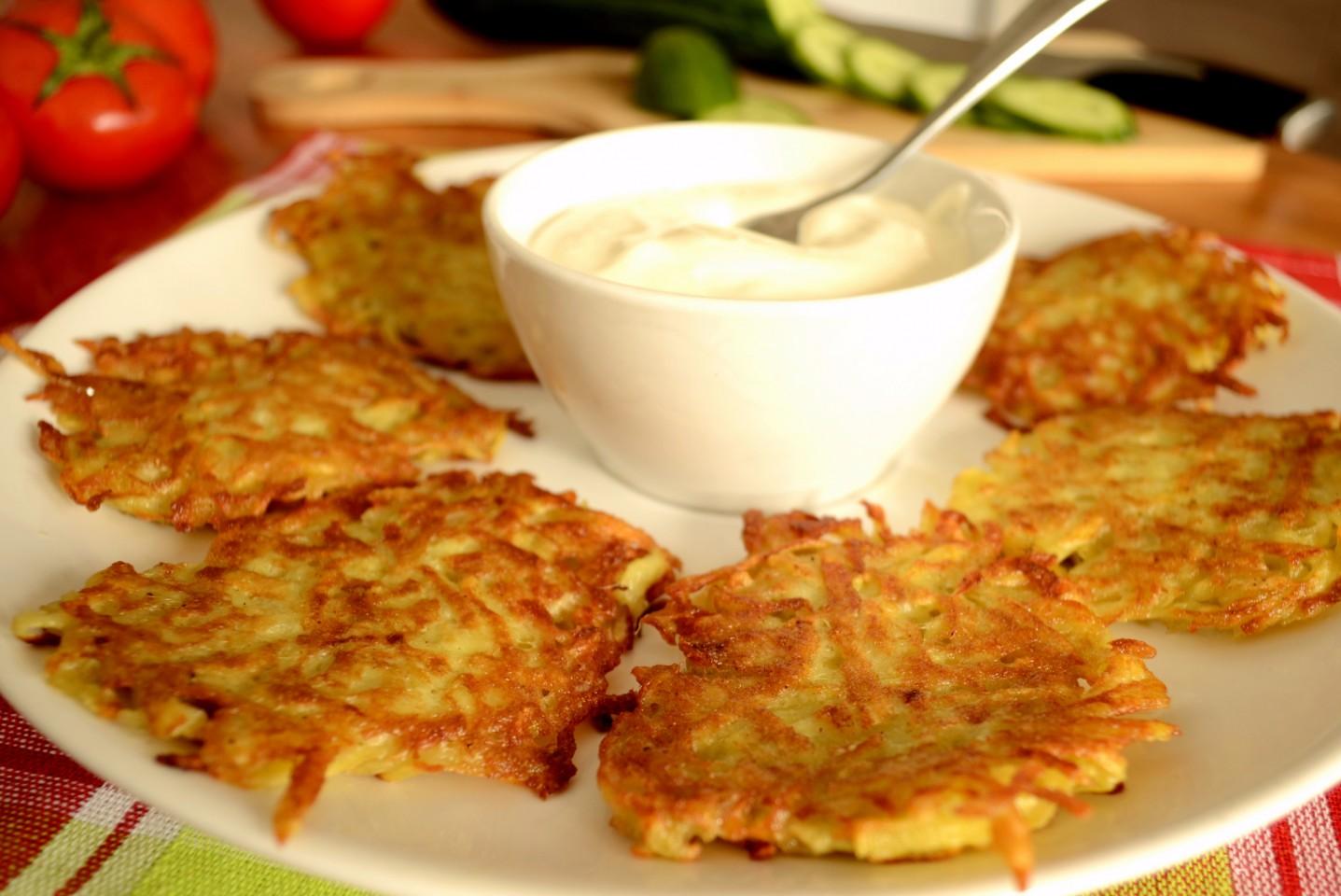
Zrazy
Zrazy – stuffed meat balls – is one of the specialties of the national cuisine. This dish traces its roots back to the Grand Duchy of Lithuania. The first written record of this dish dates back to the times of the Grand Duke and King Jagailo (15th century).
This savory dish was served to Zhigimont II who was married to Bona Sforza, a representative of the powerful Milanese House of Sforza. The Italian princess liked the Belarusian traditional dish that reminded her of Italian cotoletta alla milanese.
At first zrazy was the food of the nobility, but later it found its way to the table of every Belarusian home. The dish is called differently depending on a region; you might here the names ‘zavivantsy’ or ‘krucheniki’.
Classic zrazy are made from beef. The meet is pounded, folded and rolled with a filling inside. It can be stuffed with mushrooms, liver, vegetables, eggs and cereals.
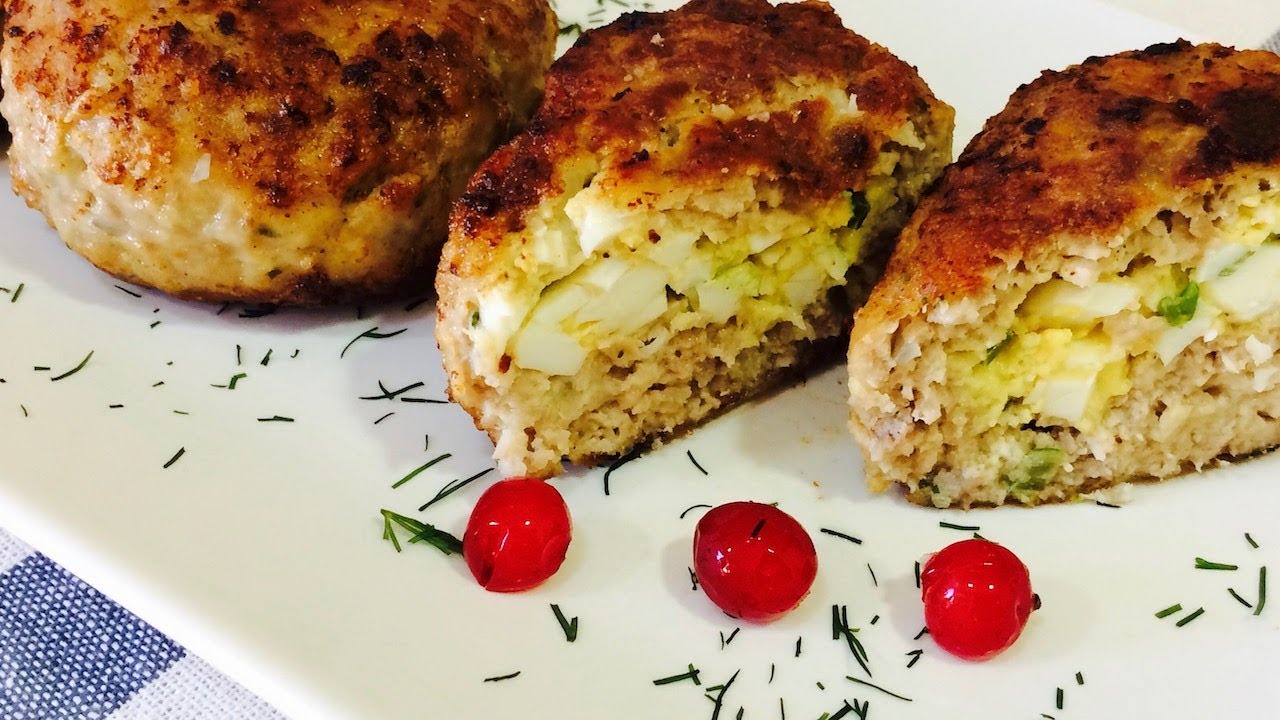
Mazurka
Another traditional dessert of Belarusian and Polish cuisine is the mazurka. This cake with a rich taste and wonderful aroma is prepared very quickly, and it also has the property of insisting, enriched with taste over time. That is, a day or two after cooking mazurka will become even more fragrant and tastier. As a traditional stuffing for pie, poppy, raisins, nuts are used. However, often poppy is replaced with dried fruits (dried apricots, prunes) to your liking, and you can also experiment with nuts.
.JPG)
Belarusian pancakes
Pancakes are some of the world’s most popular flour-based dishes. However every national cuisine has its own cooking traditions and secrets. Pancakes (bliny, blintsy, mliny) are cooked all over Belarus, on weekends and on holidays. There is one thing that differs Belarusian pancakes from pancakes cooked in other countries: Belarusians use all kinds of flour in pancake recipes.
